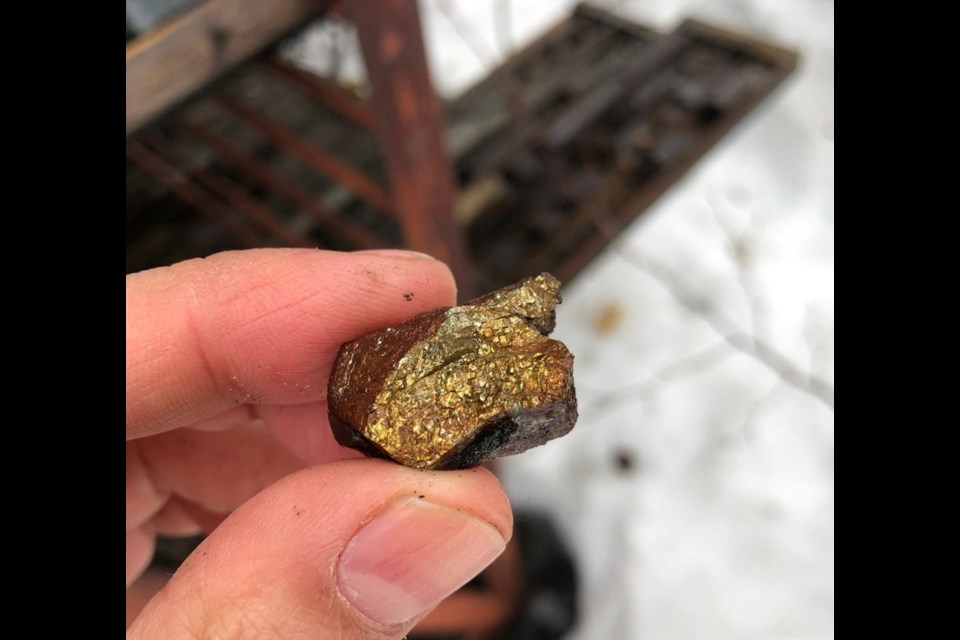A mine developer looking to restart a shuttered high-grade zinc mine near the north shore of Lake Superior reports it's in talks with “multiple global metal traders” for off-take agreements for the much-in-demand metal.
Vancouver’s Metallum Resources calls its Superior Lake Zinc Project, near the town of Schreiber, one of the highest grade zinc development projects in North America, if not the world.
The company is in the mine permitting stage on the path toward reopening of the former Winston Lake zinc mine and fast-track it to production as early as next year.
In a May 31 news release, Metallum categorized as “preliminary” discussions with number of parties indicating a willingness to provide upfront funding in advance of any concentrate shipments.
Want to read more stories about business in the North? Subscribe to our newsletter.
An off-take agreement is an arrangement between a mining company and a buyer. They're generally negotiated after a mine feasibility study is done and before mine construction. The arrangement can be used by developers as a tool for project financing.
The Winston Lake Mine closed at the end of the 1990s due to low zinc prices. Today, the critical mineral is hovering around US$3,000 per tonne. Zinc is in demand for renewable energy technologies in wind, solar and battery storage, as well as for the galvanizing, construction and automotive sectors.
Metallum is a relatively new company that acquired the project from Australia’s Superior Lake Resources.
The pandemic and distance made it difficult to develop the project and Metallum closed the deal more than a year ago. But Superior Lake bought back in as an owner and holds 65 per cent of the project.
Metallum is waiting on a provincial de-watering permit to be able to begin that process this summer.
The company said there is exceptional high-grade ore still in the ground with 16 kilometres of existing underground development leading right to the ore body.
A mine feasibility study published last year shows 2.35 million tonnes at 17.9 per cent zinc and 0.9 per cent copper. There are also some precious metals in the mix, including one million gold equivalent ounces at 13 grams per tonne.
The study detailed an underground mine capable of producing 33,400 tonnes per year of zinc and 1,270 tonnes per year of copper over an 8.5-year mine life. The company suggests there enough mineral potential on the rest of the 17,500-hectare property to add more years.
The mine project stands to be a very low-cost producer, driven by the high ore grades, soaring and sustainable zinc prices, and the abundance of leftover mine infrastructure that will give them a short timeline to production.
Sign up for the Sudbury Mining Solutions weekly newsletter here.
To bring the mine back into production will cost only US$116 million with all-in sustainable costs at an astounding US 41 cents. The payback period is three years but the company hopes to shorten that period.
Superior Zinc is a relatively turnkey operation.
The Winston deposit was mined between 1988 and 1998, producing approximately 3.3 million tonnes of 14 per cent zinc and one per cent copper.
The site contains a water treatment plant, tailings and settlement ponds, plus roads and other useful infrastructure such as power lines running through the property and an electrical transformer on site.
There’s still some construction work to do as the headframe and processing mill at the mine were dismantled. New structures will have to be built, including an accommodations camp.
The company has some very advantageous transportation flexibility when it comes to moving material to market.
The property is 20 kilometres from the Trans-Canada Highway (Highway 17) and 27 kilometres from rail connections in Schreiber. Thunder Bay and its Great Lakes port is about 200 kilometres to the west.
It gives the company the option of sending its concentrate by rail or truck to a Canadian smelter or shipping it overseas to European or Asian processors through Thunder Bay or Vancouver.
In April, the company raised $5.2 million in private financing earmarked to project development.
On the exploration side, the company maintains the rest of the property is very underexplored and believes mine life can extended two to three years, and even longer with more high-grade ore likely to be discovered deeper down.
There is an enormous amount of data left behind, the company said, indicating there are multiple targets with great exploration upside. They plan to continue to drill as they build the mine.
Area First Nations are supportive, with Metallum contracting an Indigenous-owned drilling company and showing a commitment to use Indigenous and area suppliers and labour.




